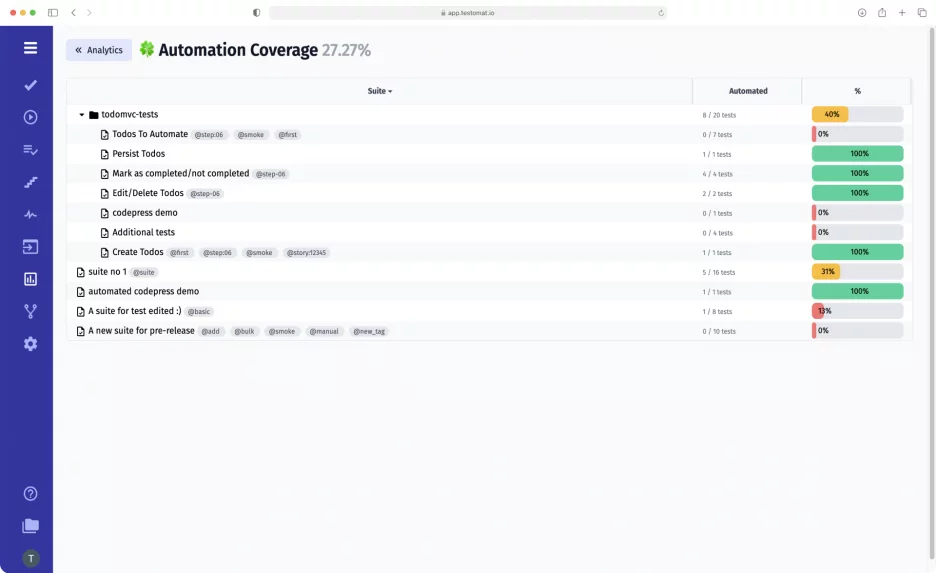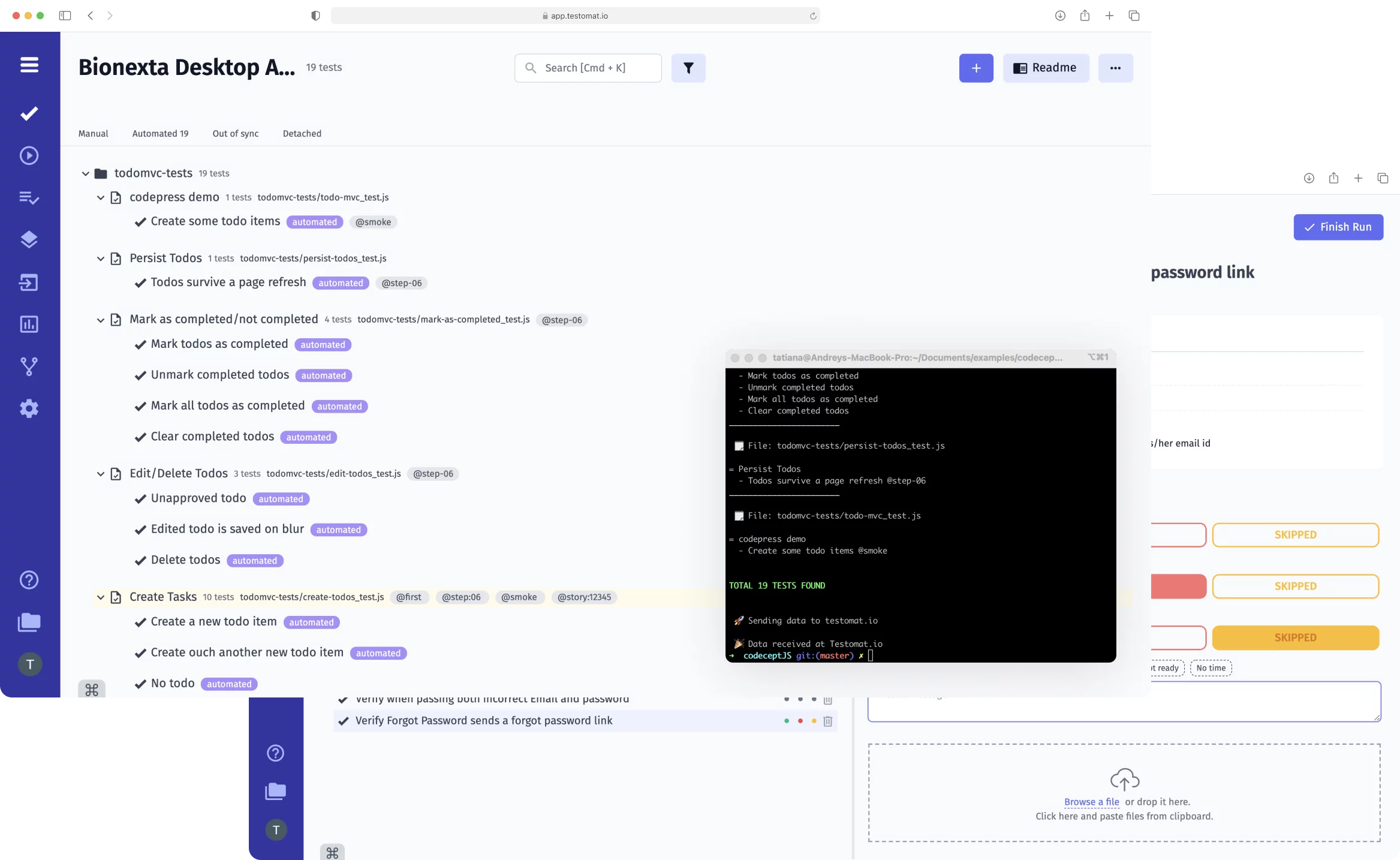
Automated testing is an important part of the software testing life cycle. Often, automated test scripts allow test software quality more efficiently and at a lower cost. Especially QA Teams strive to reduce their efforts on regression testing in this way. Test Management tool testomat.io provides an Automation Coverage testing metric. This testing metric allows the QA Manager to track the progress of automation on the project.
How Automated Coverage widget works
The automation coverage widget reports on the percentage achieved by automated testing. It lets us know how many tests are automated in some part of a project as a ratio to the manual testing part by folders and suites. For example, the suite consists of 16 tests, 5 tests are automated, which is 31% of what we can see on charts.
If you automate just eight or nine of the tests you’re already doing manually, you’ll free yourself up to increase manual test coverage.
You are able to filter within the Automation Coverage table. There is filtering in alphabetical order, suite order, the number of automated tests from the largest to the smallest and also columns with a percentage from higher to lower and vice versa.
Why test management need test coverage metric
QA manager can use some measure of the Test Coverage metric as a starting point. This testing metric can be used by the QA manager to evaluate the progress of the overall test automation initiative. It needs something improving or not.
Why Measure Test Automation Coverage is important in software testing
Using this widget and this testing metric you identify the gaps in your current test plan through holes in your current test coverage. You can also monitor whether the priorities of your testing strategy are being met.
At the same, bear in mind, that improving test coverage usually means developing more automated tests, but developing more automated scripts isn’t the goal. Automation doesn’t have to be total. Increasing the percentage of automated coverage metric means that new automated tests should be as effective in discovering defects as the old manual tests. So, it is nothing if it is only two per cent of your total manual tests. Sometimes manual tests are a better choice.
Also, Test Automation Coverage allows to evaluate of how increasing automated coverage was difficult to introduce automation. Helps count KPI metrics and end benefits introducing of automation.

